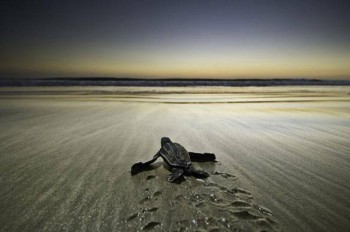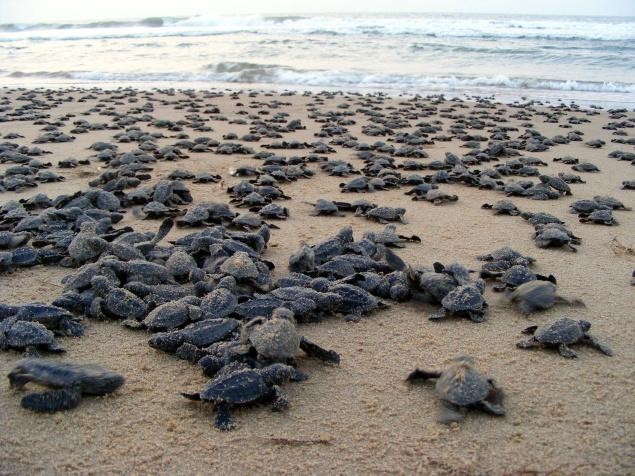
Many sea turtles must migrate hundreds or even thousands of kilometers between feeding and nesting sites
Fact: There are 7 species of sea turtles and 6 of those are found in the United States and all 6 are listed under the Endangered Species Act.
Sadly, they typically end up being eaten by predators or die from not being able to enter the water quickly enough. To combat the reduced population, regulations have been made to help protect the nesting areas of the turtles on beaches. A special LED light that uses amber colored LEDs that have longer wavelengths undetectable to turtles are now being used to illuminate coastal areas. This allows hatch-lings to not be distracted by the street lights and enter the ocean just as nature intended! How amazing!
The advanced Turtle LED technology has been recognized by the Florida Fish and Wildlife Conservation Commission as “meeting wildlife friendly criteria”. These area lights are being used along coastlines from the East Coast, Gulf Coast and West Coast. Florida hosts over 90% of all sea turtle nesting in the United States as stated by the National Fish and Wildlife Foundation. Other approved yet sub-standard lighting that can be used and approved by the FWC are:
- Approved red, orange or amber LED light bulbs with color diodes (no color filters).
- Low Pressure Sodium in 18 or 35 watts only.
- True Red Neon * Approved red or orange Internally Phosphor Coated Fluorescent Tubes.
How you can help: If you find it too costly to purchase this special LED technology for your ocean front home, there are ways to help combat the disorientation of turtles and the reduced population that is occurring because of it. Below are a few easy ways that you can do your part
- Turn off any unnecessary lights that face the beach during nesting season
- Use special fixtures that shield the lights from the beach such as aluminum flashing. Remember to shield the sides of the light as well, not just the front that faces the beach.
- Replace your existing lights with low pressure sodium vapor lighting fixtures. However the best option is a red or amber LED.
- Plant vegetation between the light fixtures and the beach, which will provide a natural screen. Sea grapes, ocean grass or other native vegetation works the best.
- Apply window tint to avoid any spillover from indoor lighting or move light fixtures away from windows entirely. You can also use blinds or curtains that will completely block the light from escaping through the window.
- You can also help increase the sea turtle survival rate by helping to clean up and maintain beaches.
If everyone does their part to keep the turtle nesting beaches as natural and clean as possible, we can easily combat fatalities and grow the sea turtle population.



Leave a Reply